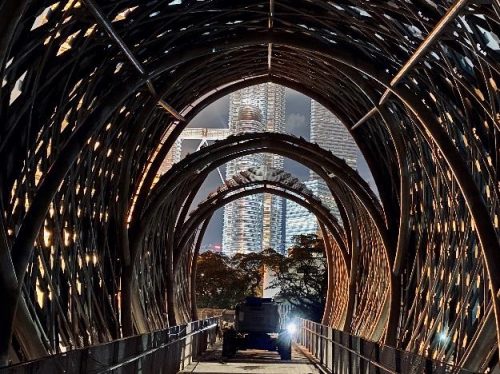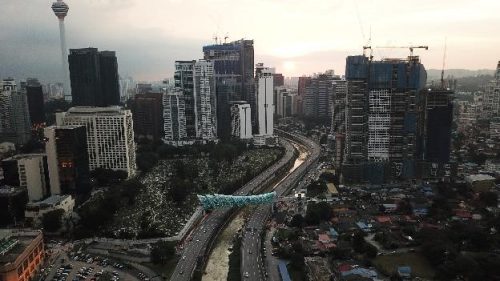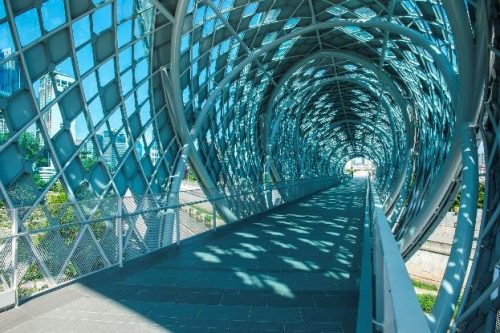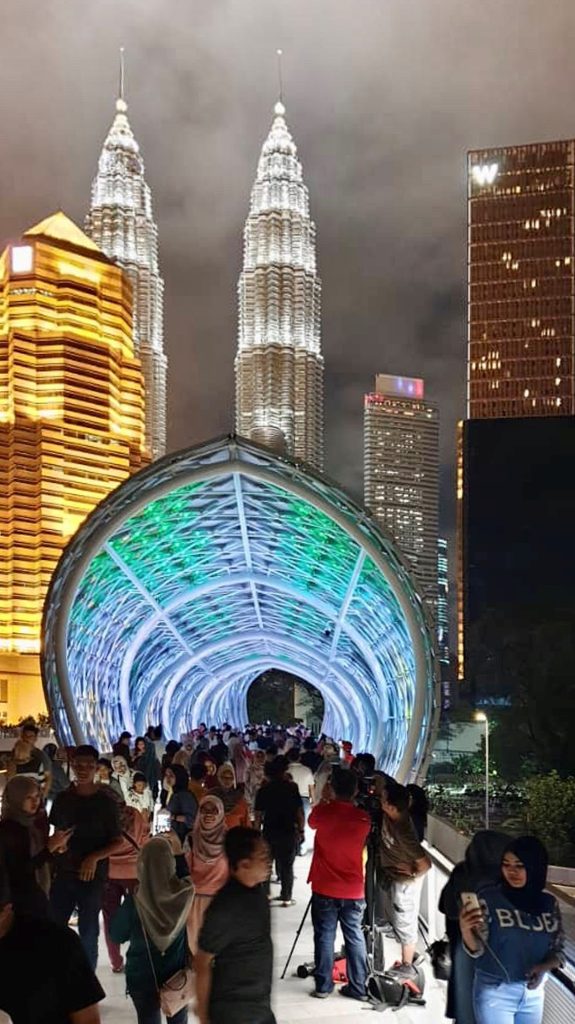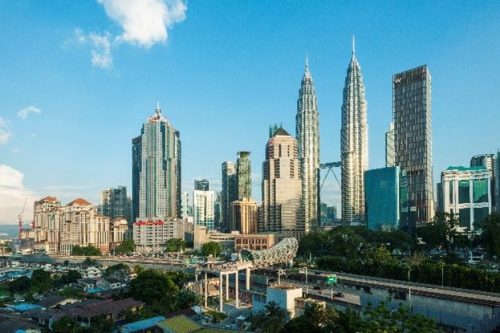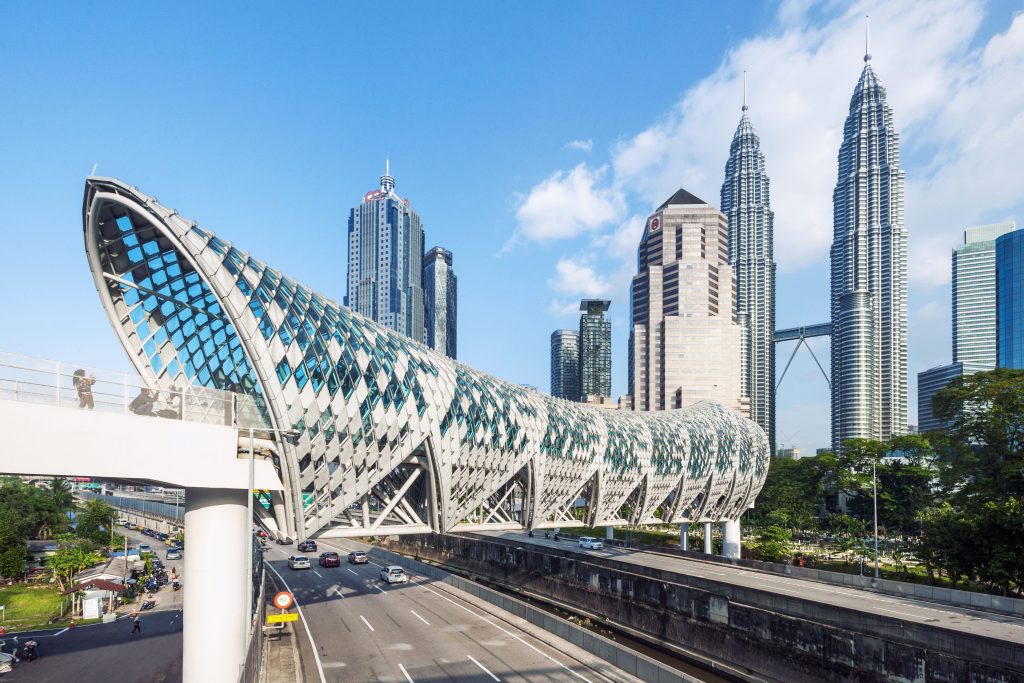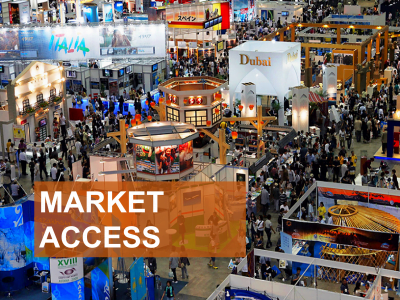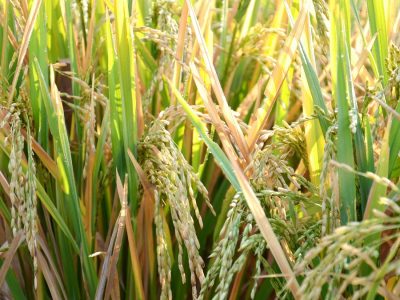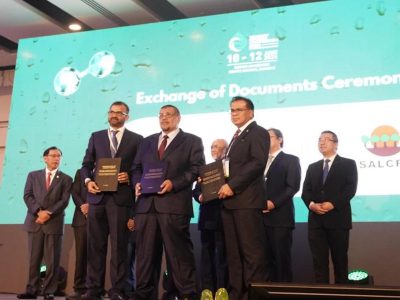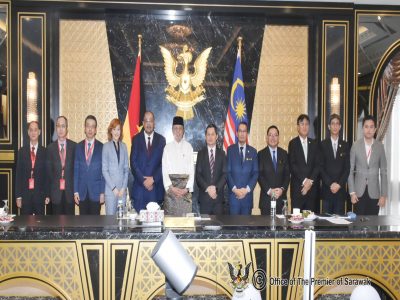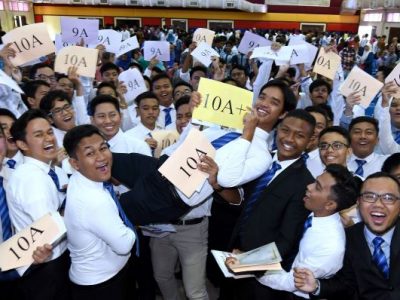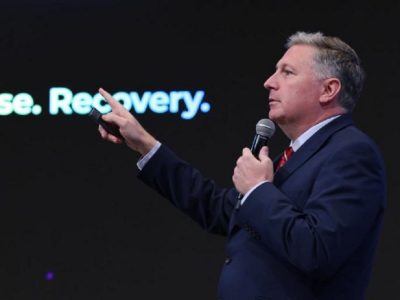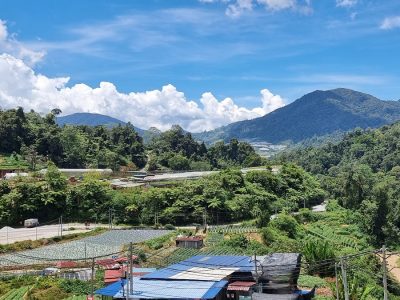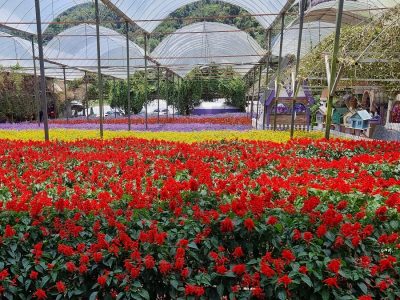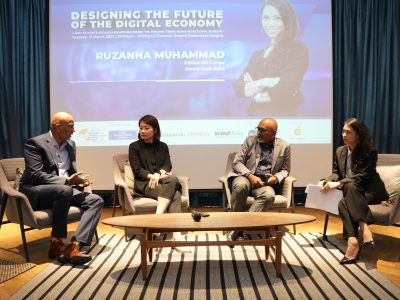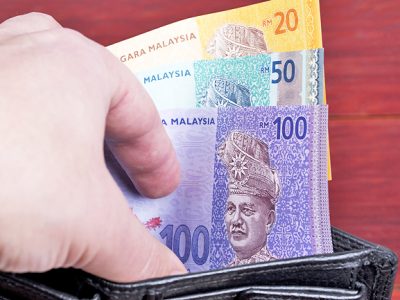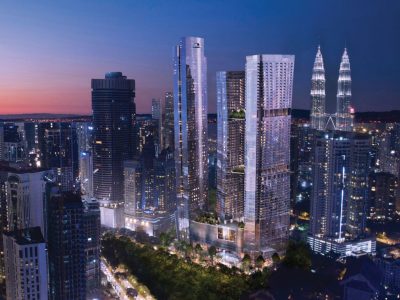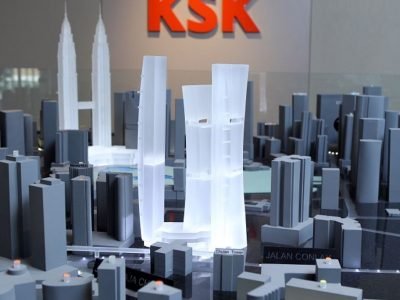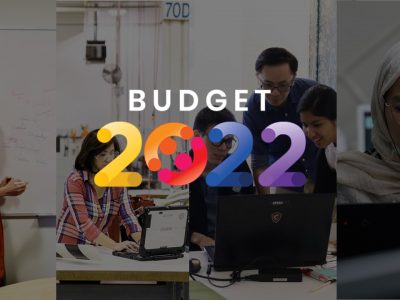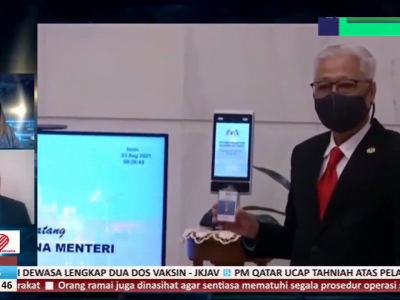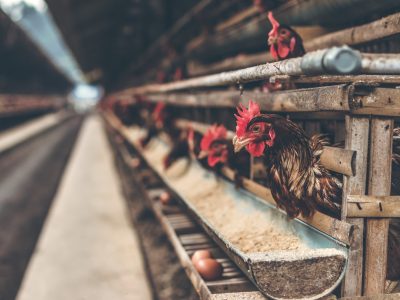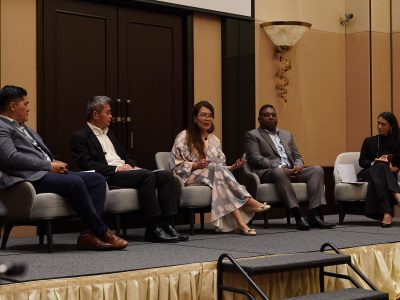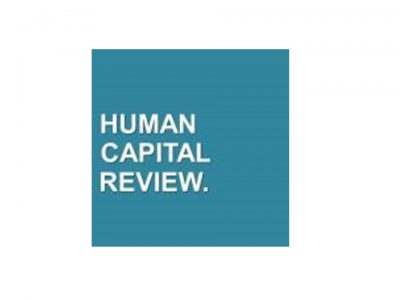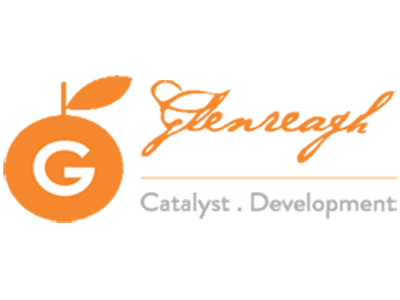VERITAS recently bagged GOLD at the Pertubuhan Akitek Malaysia (PAM) Awards 2022 that was held last month for Saloma Link. The PAM Awards have long been the gold standard for architectural companies seeking to be recognised as industry leaders and the cream of the crop. The annual PAM Awards is Malaysia’s most prestigious architectural prize ceremony, honouring architects for their contributions to design excellence and the built environment. It is comparable to the Academy Prizes in the film business, in that awards are given to the greatest achievements in the architectural profession that are acknowledged by peers and the general public.
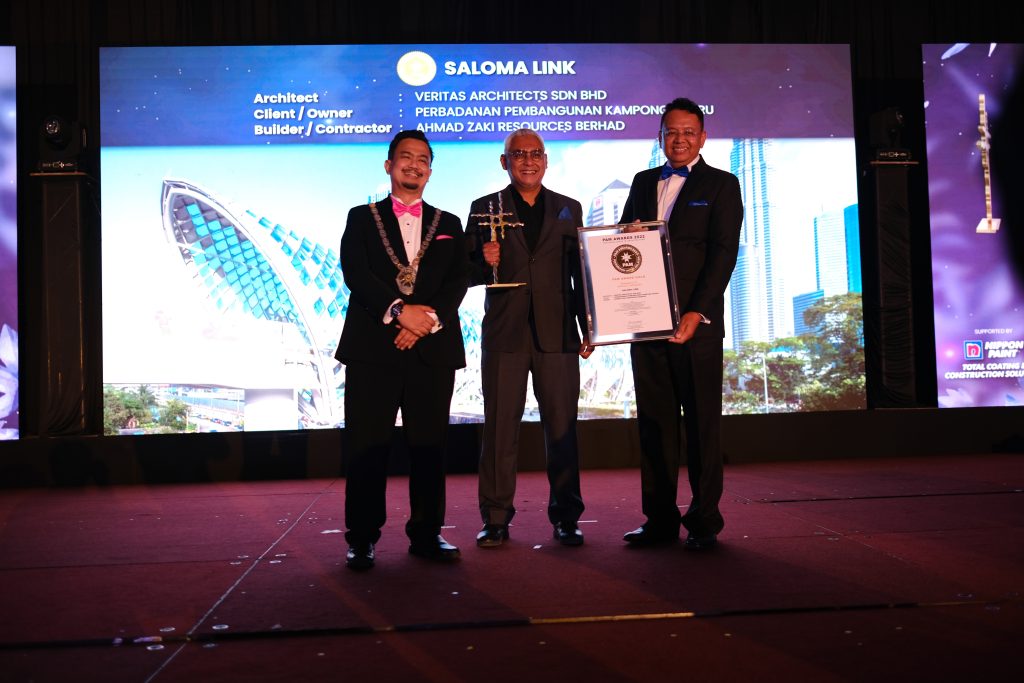
Ar. Sarly Adre Sarkum (PAM President), Ar. Azril Amir Jaafar (VERITAS Principal & Director), Ar. Sri Nor Shamsul Rizal Mohamad Jelani (Perbadanan Pembangunan Kampung Bharu Vice Chairman) receiving the Gold Award.
“This is our little effort to make Kuala Lumpur more comfortable and fun to walk besides celebrating the public realm for the people of the city to enjoy. Hopefully, this recognition will encourage more parties to come forward to contribute towards creating more sustainable urban design projects in our cities”, said Azril upon receiving the award.
Here’s to understanding the Saloma Link project better.
How it all began
In 2015, VERITAS Architects was commissioned by Kampong Bharu Development Corporation (PKB) or also known as Perbadanan Pembangunan Kampong Bharu, a state-funded trust, to design a masterplan for the redevelopment of Kampong Bharu. Kampong Bharu is a historical precinct of 198 acres with a predominantly Malay Muslim settlement located at the heart of Kuala Lumpur. In the masterplan, where VERITAS proposed to develop a higher density residential-driven enclave with a central 25-acre public park, they initiated the idea for a pedestrian bridge to connect the modern central business district of Kuala Lumpur City Centre (KLCC) with the underdeveloped traditional residential enclave of Kampong Bharu. In the late 19th century, these two communities were once connected by a small footbridge across the Klang River, but the building of the Ampang Kuala Lumpur Elevated Highway (AKLEH) in 1996 along the riverbank created a physical barrier that further divided the communities. Saloma Link aims to re-establish this historical connection and provide direct pedestrian connectivity.
When the Client had to defer the full implementation of the Masterplan due to funding, VERITAS proposed to first build the pedestrian bridge instead of a new highway connection with their small initial budget thus the Saloma Link was born as the seed for the redevelopment of Kampong Bharu. The bridge is to become a new symbol for Kampung Bharu’s future and a catalyst to bring new development and business opportunities to the old district and encourage more walkability in the city and more importantly with the new connectivity, it will re-balance the social and economic disparities between the two sides of the river.
Since its opening in February 2020, the Saloma Link has become a new landmark and public recreational destination for Kuala Lumpur, drawing a manifold increase of locals and tourists to explore the historical enclave. By increasing walkability in the city centre, it has helped to relieve traffic congestion in the picturesque narrow streets of the old enclave and to enliven both banks of the river it now connects.
The Saloma Link (Pintasan Saloma in Malay) is a new pedestrian bridge that connects two important districts in Kuala Lumpur: Kampong Bharu (New Village), the traditional Malay Muslim enclave dating back to the late 19th century and the Kuala Lumpur City Centre (KLCC), the modern cosmopolitan Central Business District (CBD), formerly separated by the Sungai Klang (Klang River) and the six-lane AKLEH highway. The Saloma Link, encompassed the redevelopment of Jalan Saloma (Saloma Street), to accommodate a small streetside plaza, wider shaded footpaths and a 370m elevated walkway culminated on a bridge that spans 69m across the Klang River and the AKLEH highway.
The bridge lands at Kampong Bharu creating a small elevated viewing platform that frames the skyline view of the vibrant KLCC with its iconic Petronas Twin Towers – the Saloma Link plants the seed for the future of Kampong Bharu.
Inspired by the ‘Sirih Junjung’, a matrimonial gift hand-crafted from ‘sireh leaves’, traditionally offered in Malay weddings as a symbol of unity, the Saloma Link represents a ceremonial gesture that embodies the bond between two important enclaves in the city: the affluent Kuala Lumpur City Centre and the historical village of Kampong Bharu. Beyond promoting increased connectivity and walkability, the Saloma Link aims to stimulate both the conservation and the redevelopment of this historical part of the city, not only by making it more accessible but, especially, by spreading the welfare of the prosperous CBD, making of this traditional enclave a more resilient place that can participate more equitably in Kuala Lumpur’s growth.
It’s not just a design, it is a statement
As the overall design of the bridge was inspired by the Sirih Junjung- the ornamental arrangement of petal leaves, the form of the bridge is a reflection of smooth subtle movement and lightness.
The curved steel roof canopy consists of 4,100 diamond facade modules, made of solid and perforated Aluminum, glass and clear panels. The configuration of these panels is designed to enhance the overlapping concept of Sirih Junjung, and its pattern references those found in traditional Malay arts & craft.
The construction challenges of the multi-directional curvatures of the bridge form were overcome by adopting computer simulation and Building Information Modelling (BIM) techniques from inception to completion.
Each of the façade panels is equipped with state-of-the-art lighting modules to illuminate the bridge during the night. However, during the day, the panel’s unique shape enables it to reflect the sunlight to give the bridge a slight glimmer and distinctive character. The façade panels also create a play of light and shadows to offer a unique experience as one walks across the bridge. The façade media lighting can be programmed for different events, which contributes to the popularity of the bridge during local festive periods.
Social Sustainability
The city of Kuala Lumpur has its roots in the tin mining boom of the early 19th century. It began at the confluence of the Gombak and Klang rivers where Chinese indentured labour was brought into the city to mine tin. Jalan Ampang was a road built on the south side of the Klang River to transport raw tin from the Ampang and Sungei Besi mines to the young city of Kuala Lumpur at the confluence and down the river to Port Swettenham (now Port Klang). From its early role in the mining history, Jalan Ampang evolved into one of the main economic arteries of Kuala Lumpur and is today the main boulevard and backbone of the KLCC central business district.
With the increase in population, the settlement expanded on both sides of the river to what is now known as Kampong Bharu. Historical maps indicate the Klang River meandering through Kampong Bharu with a wooden foot bridge crossing the river since the 1870s. The early settlers on the north bank of the river were the predominantly Malay Muslim community. Along the river’s south bank lay the village Muslim cemetery existing till today. Roughly following the course of the river on the southern bank, were large villas built in the early 20th century by the affluent Chinese community from tin and rubber wealth, having evolved now into Kuala Lumpur’s new central business district (KLCC) crowned by the Petronas Twin Towers.
Although the river was already seen to physically divide these economically disparate ethnic communities, the introduction of the 6-lane AKLEH highway further deepened the division by straightening the river and demolishing the historical footbridges that existed. The highway drove a physical barrier between the two communities and a stark contrast is seen in the modern business district of KLCC and the under-developed traditional Malay enclave of Kampong Bharu.
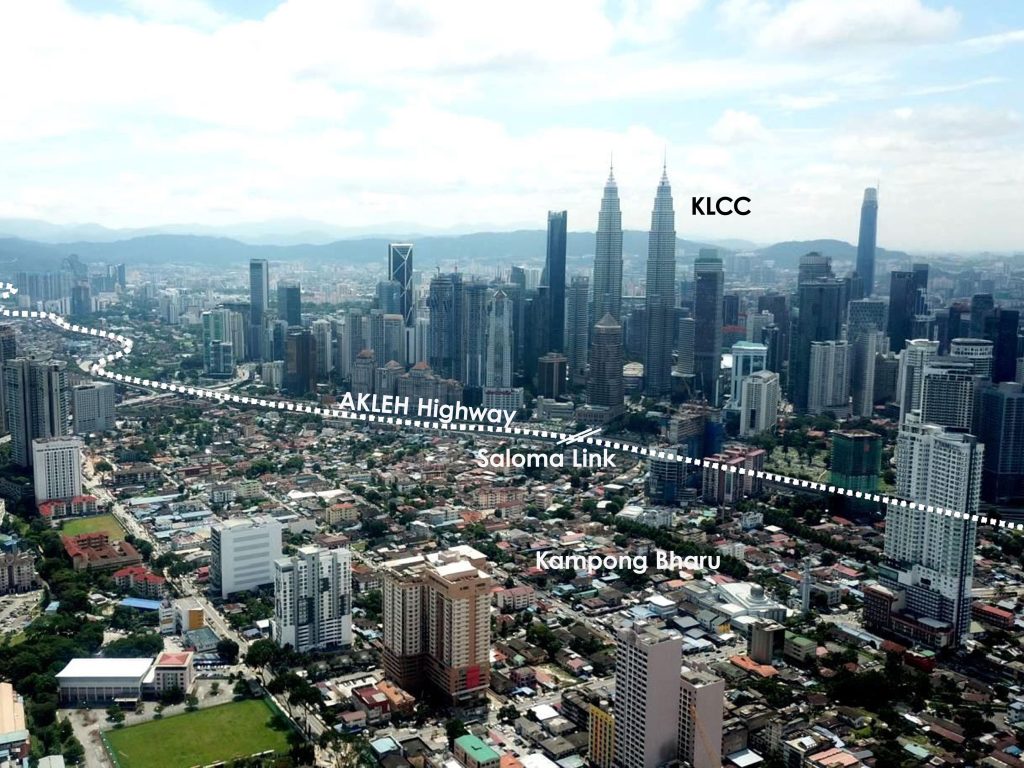
Saloma Link plays a larger significance in the urban fabric of the city. As well as enhancing connectivity, it also aims to re-balance social and economic inequal.
Saloma Link plays a larger significance in the urban fabric of the city. Besides enhancing connectivity, it aspires to re-balance inequalities and bridge the poor and rich communities across the river. It aims to re-establish this historical connection to enhance the social sustainability of the Kampung Bharu community and to promote the spillover of the economic energy of the prosperous new CBD to the historically rich but undervalued village enclave.
Economic Sustainability
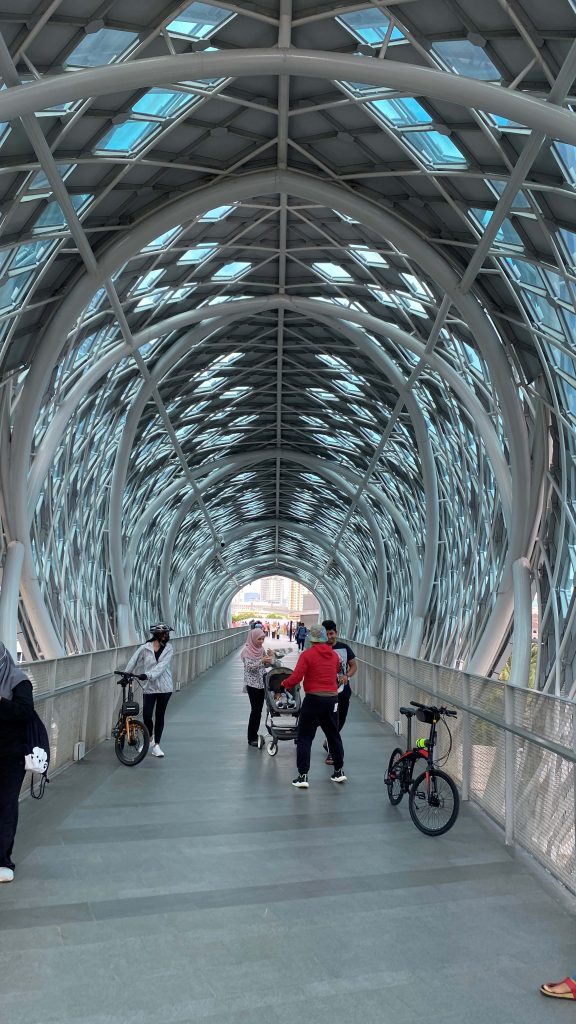
Bridge opens up new opportunities for small family businesses in the historical enclave of Kampong Bharu and encourage more walkability in the city.
The bridge connection encourages the movement of people from the cosmopolitan community of KLCC and Jalan Ampang to the vibrant but underdeveloped Kampong Bharu. The increased visitor traffic stimulates the growth of the many traditional small family-owned food businesses existing in Kampong Bharu, which improves the economic sustainability and well-being of the place.
Sustainable future development
The Saloma Link and Kampung Bharu Masterplan is part of VERITAS future vision for Kuala Lumpur urban regeneration. The establishment of this first modern pedestrian link sets the development on the right sustainable footing that gives priority to pedestrian mobility. Besides that, the residential-driven Masterplan seeks to redress the acute affordable housing imbalance created by predominant higher-cost residential and commercial development in Kuala Lumpur over the last 20 years. The Masterplan envisions a revitalized, higher-density residential enclave in the city centre that will enliven the city, create a greater sense of belonging and identity for city centre dwellers as well as significantly reduce the daily commuting between city centre and suburban areas. It has become part of the effort in encouraging pedestrian mobility and promoting sustainable urban design and place-making, reclaiming the historical memory and connection of the old Malay Muslim village to the modern city of Kuala Lumpur today. VERITAS believes that the Saloma Link plays a pivotal role in setting the foundation for the future vision and development of Kampung Bharu.


